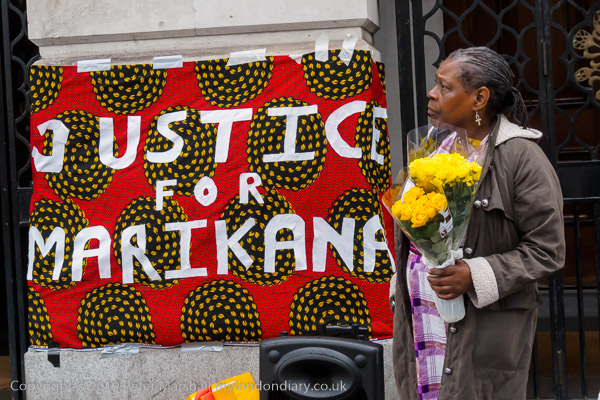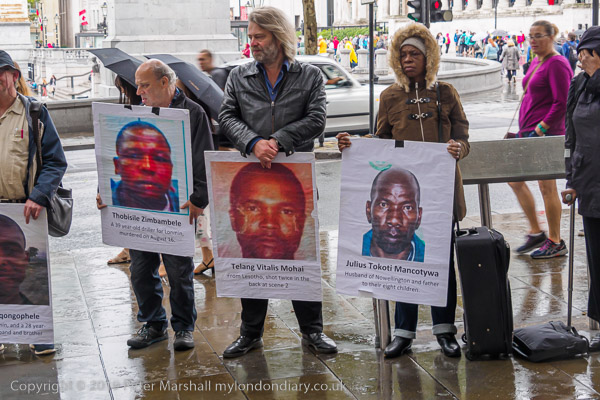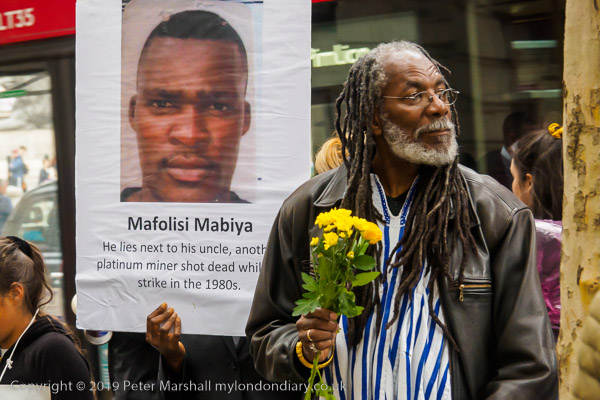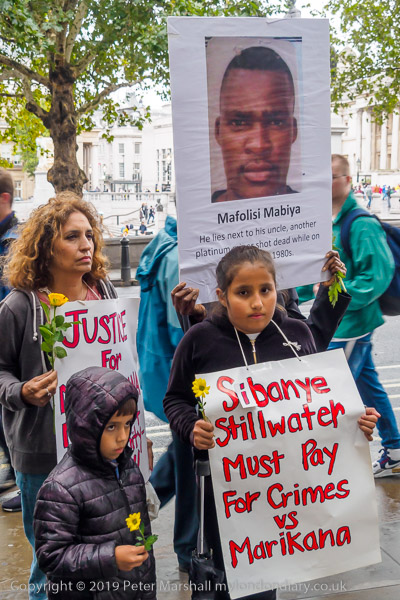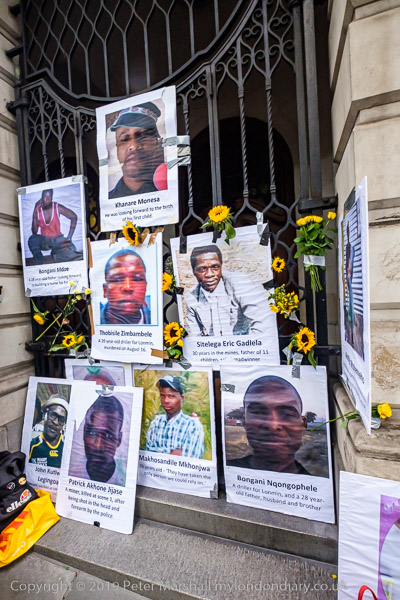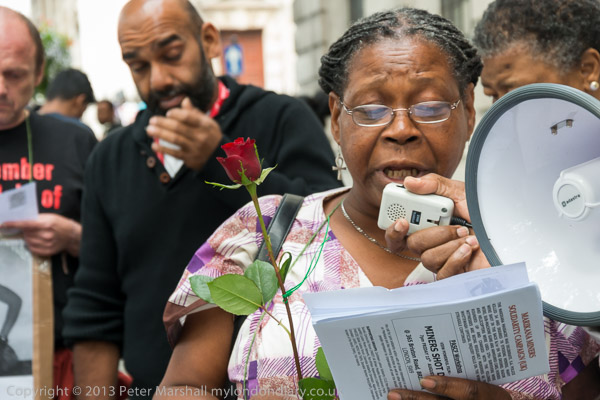
London Solidarity with Marikana Miners Today, 16th August 2022, from 5pm people will be outside South Africa House to remember the massacre ten years ago of 34 striking miners at Lonmin’s Marikana platinum mine, a massacre deliberately planned by South African police working for London mining company Lonmin, whose directors at the time included Cyril Ramaphosa, now President of South Africa.
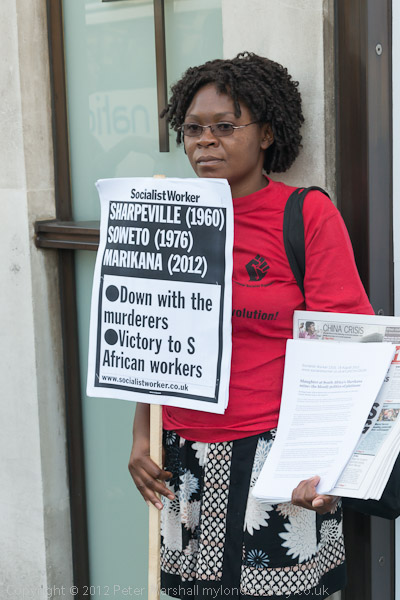
It was an attack that brought back memories of the Sharpeville massacre of 1960 and the 1976 Soweto Uprising, things we had perhaps thought no longer possible after the overthrow of the white apartheid regime. South Africa may have got rid of its crude system of racial injustice but it was a demonstration that there are still huge differences and exploitation based on wealth and privilege – and of the lengths that those who benefit most from these are willing to go to maintain their position. A naked expression of class war.
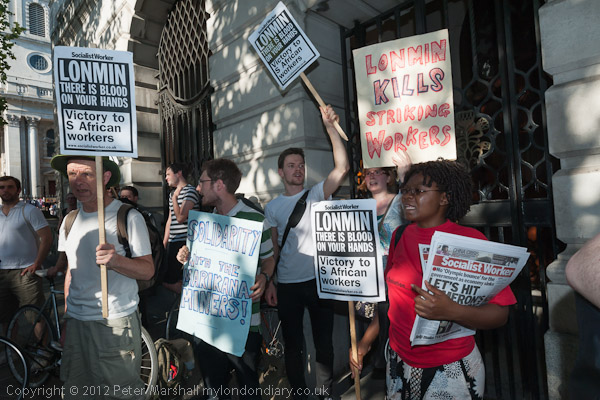
As usual, Wikipedia gives a detailed account of what took place, although some details are unknown or contested, and my account here largely relies on it. The massacre “was the culmination of a series of violent encounters between the SAPS, Lonmin security, and members of the National Union of Mineworkers (NUM) on one side; and strikers on the other.” Various clashes in the five days before it had led to a number of strikers being injured and ten deaths, of “six mine workers, two Lonmin security guards, and two SAPS members.“
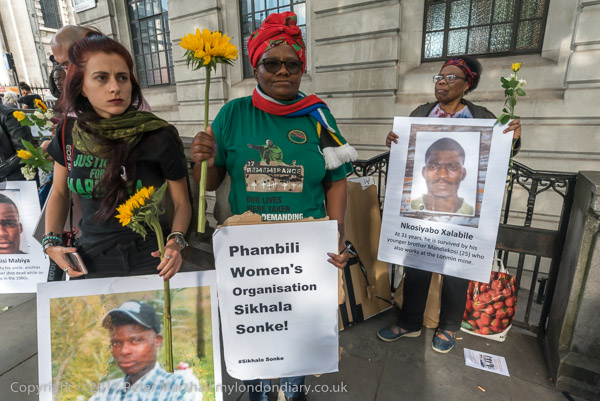
It was not a single massacre on 16th August; police opened fire with their assault rifles on two groups of miners around 500 metres apart, killing seventeen at each of these places. Police say they first tried to control the strikers with water cannons, rubber bullets, stun grenades and tear gas. The miners were largely armed with spears, knives and sticks, but six guns were later found at the site, including one taken from a police officer killed earlier in the week.
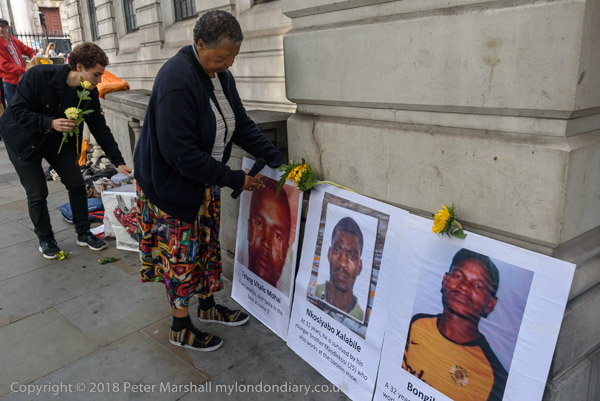
Police accounts as in this country are seldom reliable, usually decorated or invented to justify and defend their actions. But there were more independent observers. A Reuters photographer present does confirm that he saw one of the strikers firing a pistol before the police opened fire. The noted South African journalist Greg Marinovich who investigated the scene closely found that some of the miners killed were shot at close range or crushed by police vehicles, but most were targeted and killed from around 300 metres, concluding “It is becoming clear to this reporter that heavily armed police hunted down and killed the miners in cold blood.” Other reports say police shot and killed miners who had their hands up in surrender.
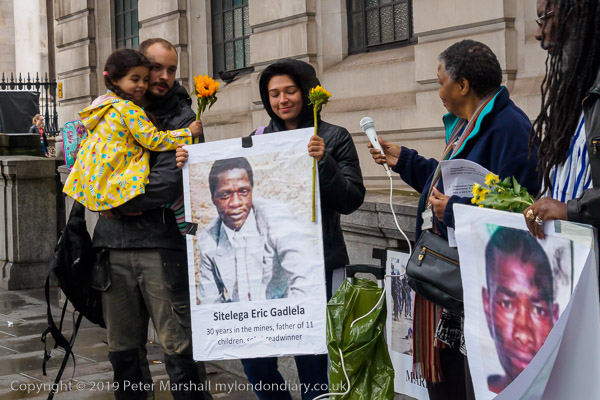
270 miners were arrested and charged with ‘public violence’ which was later changed to murder, using the doctrine of “common purpose”. Most of those arrested complained that they were beaten in custody. Eventually after great public outcry the charges were dropped and most of those arrested released.
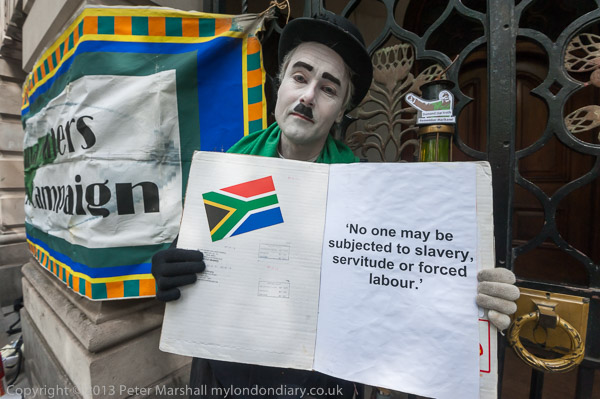
A commission was set up into the massacre, though many feel it made its inquiries after the authorities had time to cover up and falsify evidence. And although it made recommendations none has been implemented and no prosecutions have followed. You can watch a recent long interview with Rehad Desai, derector of the documentary film ‘Miners Shot Down‘ (Trailer here) from a few days ago on YouTube, Marikana Massacre | A decade later, still no justice.
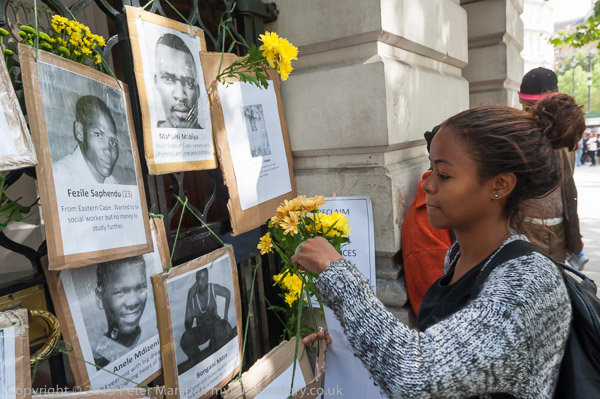
The first protest in London took place two days later on 18th August 2012, when a small group of people marched from the Lonmin offices at Hyde Park Corner to South Africa House in Trafalgar Square.

There have been protests each year on or close to the anniversary, with vigils outside South Africa House, where security have often come to harass those holding the events. But after the offices there have closed for the day and the security are off-duty people put flowers and pictures of the murdered miners on the gates and walls.
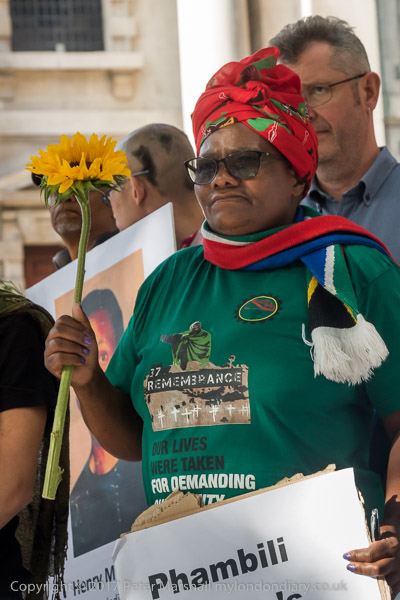
And there are speeches and songs and a silence. Some years those taking part have included guests from the Marikana women’s organisation Sikhala Sonke (We Cry Together), including Primrose Nokulunga Sonti who have joined those from various African and UK organisation members at the vigil.
